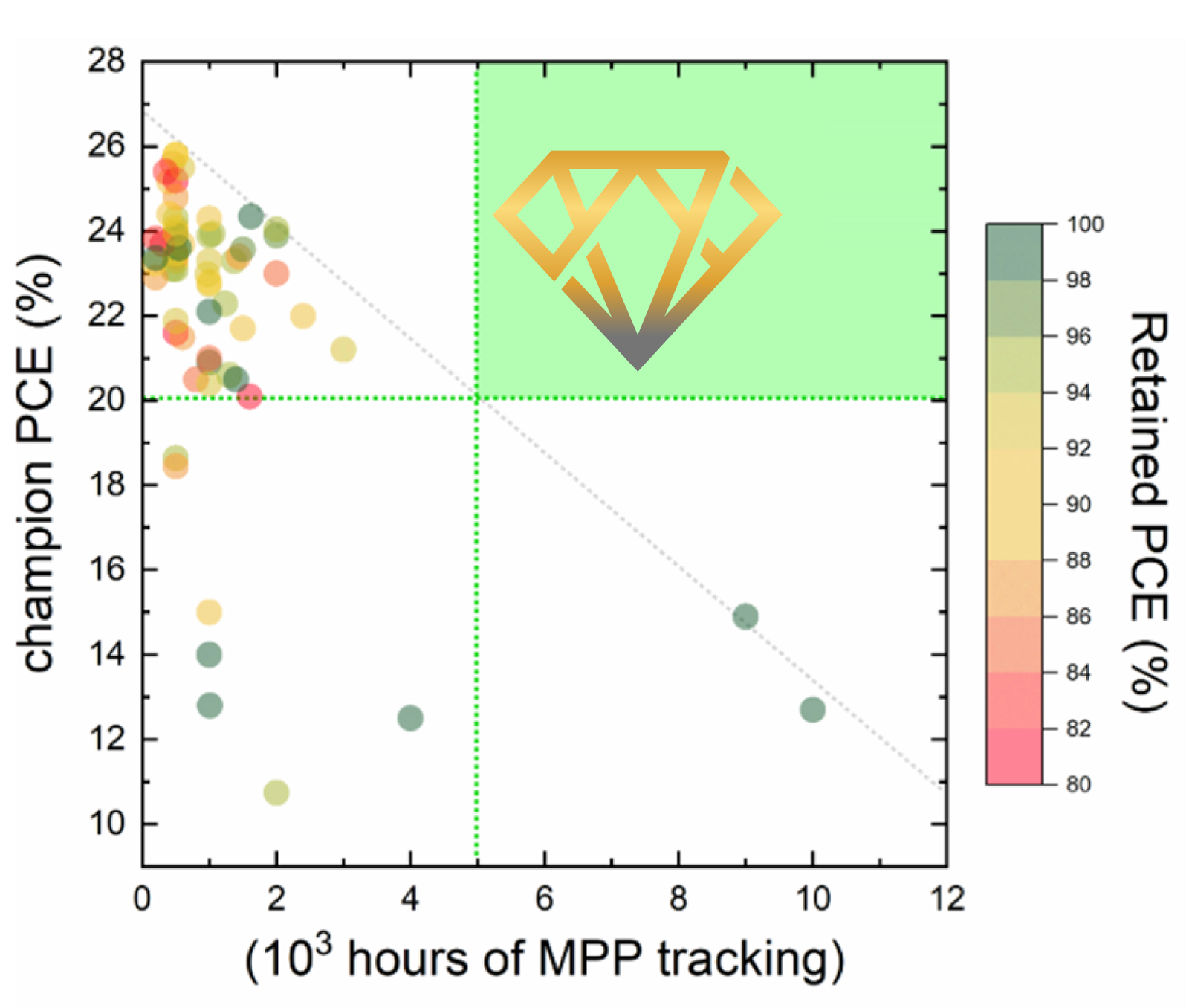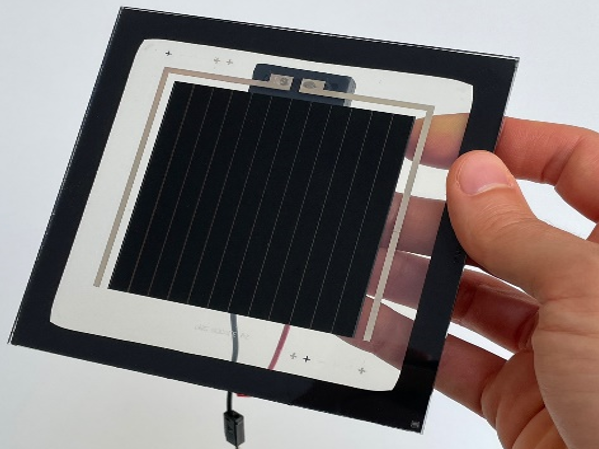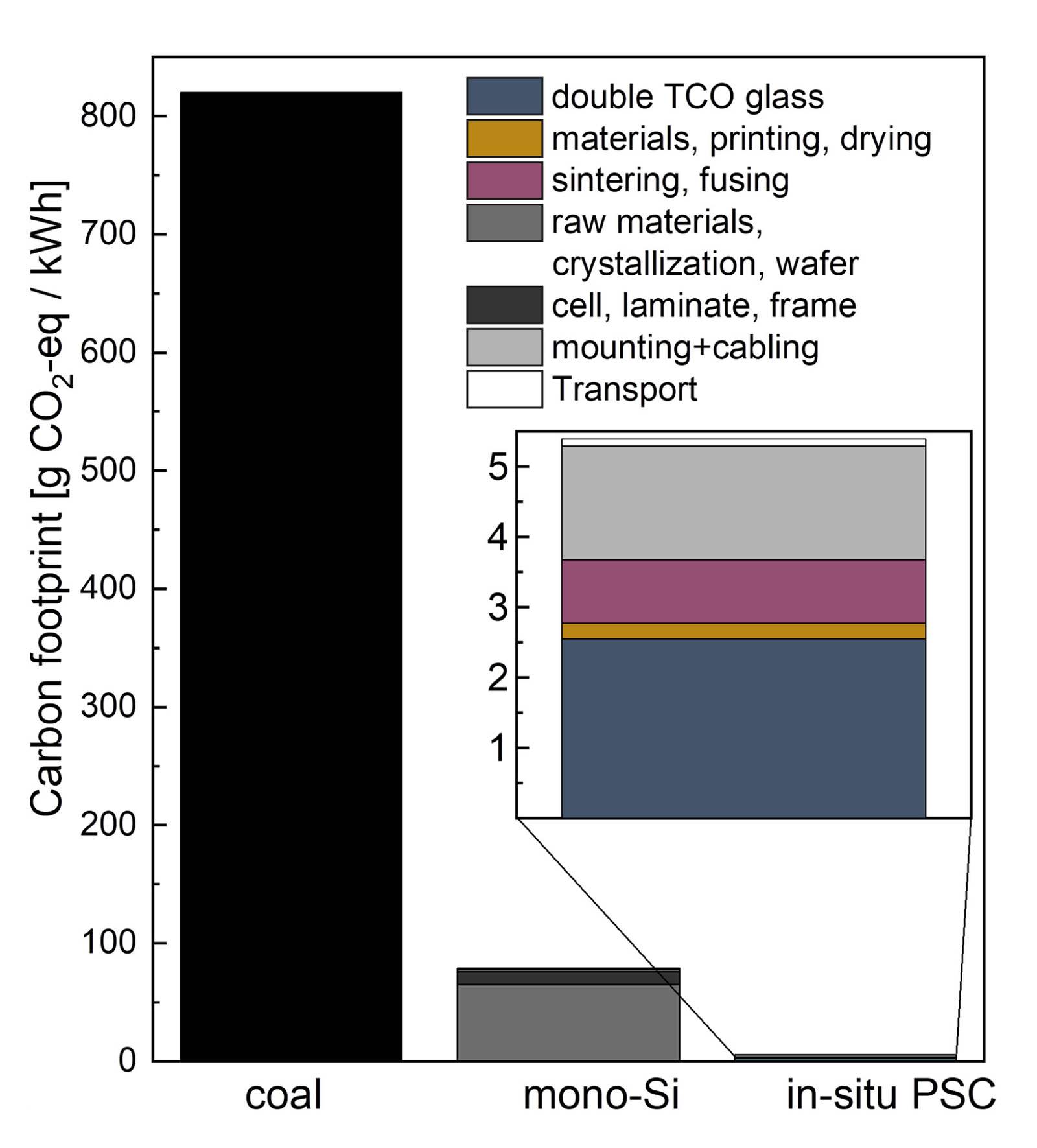Work Packages
Objectives
WP1 - Materials
- Optimization of absorber layers
- Optimization of hole transport materials
- Optimization of electron transport materials
- Optimization of electrode deposition
WP2 - Stable and highly efficient perovskite solar cells
- PCE ≥27% stability ≥5,000h for small-area PSC devices
- Lowering Pb content in high PCE PSC
- Optimization of carbon-based PSC
- Characterization and simulation
WP3 - Module Development
- Identification of coating/printing techniques for the full stack
- Carbon-based module up to 100 cm² with PCE ≥18%; large-area module up to 500 cm² with PCE ≥16% fabricated outside the glovebox
- Highest performing module up to 49 cm² with PCE ≥24%
- Development of cells interconnection strategy
WP4 - Module Packaging & Encapsulation
- Minimization interaction between laser beam and glass frit
- Optimization and validate laser-assisted sealing
- Laser-sealing of perovskite modules
- Polymeric sealing for PSC modules
- Assessment and quality control of the encapsulation
- Implementation lead sequestration layers
WP5 - Stability Assessment
- Assessment of material aging
- Characterization of intrinsic cell degradation mechanisms
- Evaluation of extrinsic and combined degradation mechanisms
- Assessment outdoor stability
WP6 - Sustainability
- Printed carbon-PSC modules, enabling terawatt PV production with lowest environmental impact
- Life cycle, techno-economic and social assessment of PSC module production
- Assessment of critical materials
- Design for recycling
- Hazardous materials leakage assessment and mitigation
WP7 - Dissemination & Exploitation
- Scientific and technical dissemination
- Open access for all publications
- Intellectual property management plan
- Technology exploitation roadmap, ensuring its compliance to main regulatory and standardization referential for the PV industry
WP8 - Management & Coordination
- Project coordination and management
- Preparation of internal and official reports to control the progress of DIAMOND
- Data management plan
- Quality assurance and impact monitoring (Project Management Handbook)
DIAMOND IN FIGURES


DIAMOND intends to report for the first time ever highest efficiencies and highest lifetimes for the same device
In the R&D of PSC, great achievements have been made over the past years in reaching high PCE as well as operational stabilities. However, these achievements have not been reached combined in one device.
DIAMOND will demonstrate for the first time that perovskite PV can achieve simultaneously both high efficiencies (>20%) and long lifetimes (>5,000h, PCE loss <3% under 1 sun illumination).


The strategy to approach highest PCEs in carbon-PSCs
While graphite-based PSC enable highest stability and best up-scalability, they still lack be behind in terms of efficiency. DIAMOND targets to overcome this performance gap. The DIAMOND project can draw from this widespread knowledge on the state-of-the-art and the derived strategies to lift LT-C PSC to the next level of highest performing solar cells.


Advanced carbon-electrode pastes allow the complete manufacturing of perovskite modules by printing processes
For the upscaling, DIAMOND will focus on scalable and automated processing techniques. The consortium aims to adopt different scalable printing/coating techniques such as blade-coating, slot-die coating, spray coating, ink-jet printing and screen printing to deposit out of glove box the full stack (ETL/perovskite/HTL/carbon or insulator/carbon) and further interfacial layers.


Module prototype printed and encapsulated by Solaronix
DIAMOND industrial partner Solaronix is pioneer in the production of printed PSC modules, reporting perovskite modules with a surface area of 47.6 cm² and PCE of 13%.


Carbon-eq footprint for electricity production
PV industry keeps growing at the pace necessary to reach the Paris climate goals, the global PV industry will become a significant carbon-eq emitting sector, surpassing the national emissions of France. Fraunhofer already demonstrated that fully printed graphite electrode-based PSC have the potential to reach the ultimate lowest carbon-eq footprint of any outdoor mounted PV technology, which is represented by the glass substrate.


Safe-by-design device architecture with MOF Pb-sequestration layer
DIAMOND targets to develop an innovative device architecture based on a porous polymer-metal organic framework (MOF) composite material that can be incorporated into solar panels in a “safe-by-design” approach to protect the environment in the case of water intrusion or leakage of lead from the panel.
Deliverables
WP1 - Materials
- Report crystalline and stable α-FAPbI3 and Pb-Sn perovskite from scalable techniques
- Report optimized HTL and ETL for optimal junction
- Report on carbon electrode with optimized conductivity and charge selectivity
WP2 - Stable and highly efficient perovskite solar cells
- Report on highest efficient PSC with PCE ≥ 26% and roadmap to PCE ≥ 27% with long-term stability
- Report on Pb-Sn based PSC with PCE ≥ 22% and roadmap to PCE ≥ 24% with long-term stability
- Report on C-PSC with PCE ≥ 21% and roadmap to PCE ≥ 23% with long-term stability
WP3 - Module Development
- Carbon-based module up to 100 cm² with PCE ≥ 18%
- Carbon-based module up to 500 cm² with PCE ≥ 16%
- Highest performing module up to 49 cm² with PCE ≥ 24%
WP4 - Module Packaging & Encapsulation
- Report on development, optimization and implementation of laser-sealing method to the fabrication of PSM
- Report on implementation of MOF for lead sequestration
- Report on lamination and low-temperature processable PSC module sealing
WP5 - Stability Assessment
- Selection of ISOS accelerated aging protocol to study intrinsic and extrinsic cell stability
- First operation of novel developed MPPT with 100 channels
- Report on the outdoor stability tests on modules, projecting of 25 years lifetime
WP6 - Sustainability
- Report on life-cycle, critical materials, techno-economic, and social assessment
- Report on recycling strategies and hazardous materials leakage assessment applied to DIAMOND modules approaching 100% recyclability
WP7 - Dissemination & Exploitation
- Dissemination, exploitation and communication plan
- Intellectual property management plan
- Technology exploitation roadmap
WP8 - Management & Coordination
- Project Management Handbook
- Data management plan
- Quality Assurance Report
